ESSENTIAL NUTRIENTS-DEFICIENCY SYMPTOMS
Whenever the supply of an essential element becomes limited, plant growth is retarded. The concentration of the essential element below which plant growth is retarded is termed as critical concentration. So, the element is said to be deficient when present below the critical concentration.
Each element has some specific structural or functional role in plants. In the absence of any particular element, plants show certain morphological changes which indicates deficiency of that certain elements, such symptoms are called deficiency symptoms.
The deficiency symptoms vary from element to element and they disappear when the deficient mineral nutrient is provided to the plant. However, if deprivation continues, it may eventually lead to the death of the plant.
DEFICIENCY SYMPTOMS
The kind of deficiency symptoms shown in plants include chlorosis, necrosis, stunted plant growth, premature fall of leaves and buds, and inhibition of cell division.
The deficiency symptoms can be distinguished depending upon the followings-
- Region of occurrence
- Presence or occurrence of dead spots
- Chlorosis of entire leaf or Interveinal chlorosis
Region of occurrence depends on the mobility of the element in the plant. For elements that are actively mobilised within the plants and exported to young developing tissues, the deficiency symptoms tend to appear first in the older tissues. For example, the deficiency symptoms of nitrogen, potassium and magnesium are visible first in the senescent leaves.
In the older leaves, biomolecules containing these elements are broken down, making these elements available for mobilising to younger leaves. As a result, deficiency symptoms tend to appear first in the young tissues whenever the elements are relatively immobile and are not transported out of the mature organs. For example, element like Sulphur and calcium are a part of the structural component of the cell and hence are not easily released.
- Deficiency Symptoms on Old leaves
Such symptoms may be without dead spots or with dead spots.
- Without dead spots-
Nitrogen *Uniform chlorosis of leaves including veins. Magnesium * Chlorosis in between the veins but veins remain green.
* The leaves become stiff and erect especially in cereals. Cereals show characteristics “V” shaped yellowing at the tip of older leaves.
* Unlike N & P, upward curling of leaves, most prevalent towards the end of growing crop season.
* Except oat, cereals are fairly resistant.
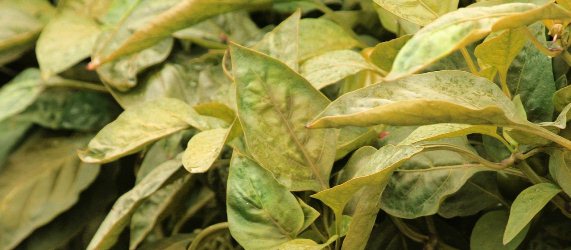
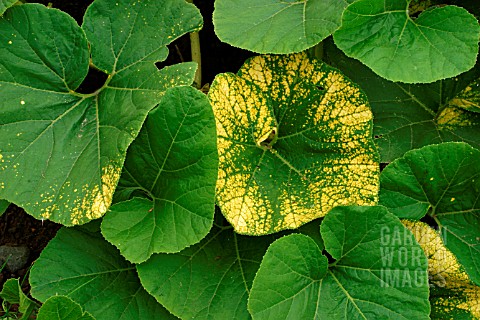
- With dead spots-
Potassium * yellowing (chlorosis) starts from leaf tips to centre of leaf base. Curling of leaves towards under surface. Molybdenum * Translucent spots of irregular shape which are light green, yellow or brown in between the veins of leaves. Chlorotic mottling between veins of middle leaves. The affected spots are infused with resinous gum exudes from rear side of leaf.
* Necrosis very soon, one can observe sharp difference between green, yellow and necrotic portion.
* Tip burn, margin scorching, brown spot near margin.
* Barley most susceptible, potato shows abnormal dark green colour of foliage followed by browning.
* Cotton bolls are either small, knotty or poorly opened.
* Brassica species are most susceptible.
* Yellow spot of citrus.
* Whiptail of cauliflower (Rat disease)
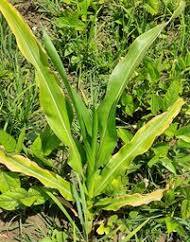
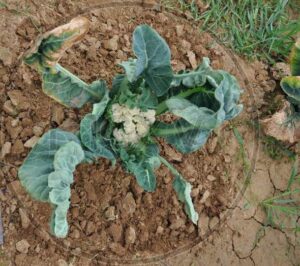
- Symptoms on New Leaves
New leaves show symptoms where either veins remain green (Interveinal chlorosis) or remain not green.
Iron (veins remain green) * Principal veins remain green but other portion of leaf turns yellow tending towards whiteness. Manganese (veins remain green) * Principal and small both leaves remain green, interveinal portion is yellowish but not tends towards whiteness. Sulphur (veins remain not green) * No dead spots, leaves become small but veins are paler than interveinal portion. Copper (veins remain not green) * Resetting and excess gumming.
* Chlorosis starts from base of leaf.
* Complete interveinal chlorosis.
* Chequered appearance of leaf, oat and soyabean most affected.
* Grey speck of oat
* Pahala blight of sugarcane.
* Vegetable leaves develop yellowish green colour and become thick and firm.
* Yellowish leaf tends towards whiteness, in extreme deficiency chlorosis of veins occur and leaf loose lustre.
* Multiple bud formation in leaf axils when shoot apex dies.
* Wheat is very susceptible.
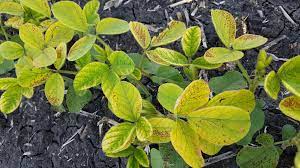
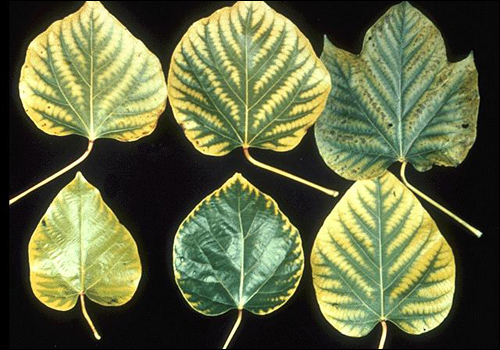
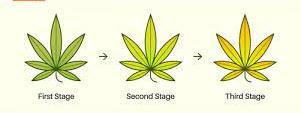
- Deficiency Symptoms on both Old & New leaves
Zinc * Dead spots over leaf including veins, tip and margins. Lamina becomes chlorotic and veins remain green.
* Dwarfing of vegetable growth, new leaves emerge white in colour.
* White bud of maize.
* Khaira disease of rice
* Plant malformation in cereals.
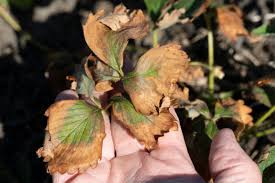
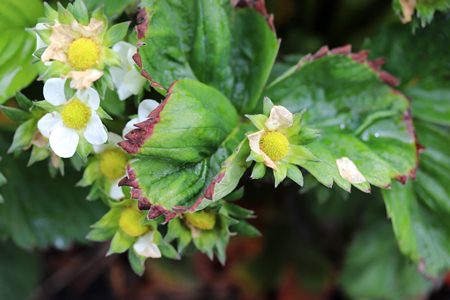
- Symptoms on Terminal Bud
Calcium * Bud leaf becomes chlorotic white with base remaining green. Boron * Chlorosis starts from base to tip. Tips become largely elongated into a whip like structure develops brownish or blackish colour.
* Root system poorly develops or lack fibre.
* Hollow stem of cauliflower
* Browning of cauliflower curd
* Top sickness of tobacco
* Hard fruits of citrus.
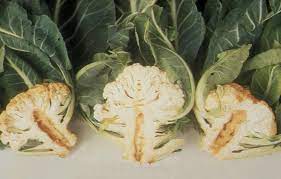
In short, Plants show the following types of deficiency symptoms:
- Chlorosis (loss of chlorophyll) due to lack of N, K, S, Fe, Mg, Mo, Mn and Zn.
- Necrosis (tissue death, particularly leaf tissue) due to lack of Ca, Mg, K and Cu.
- Inhibition of cell division due to lack of N, K, S, and Mo.
- Delayed flowering due to low levels of N, S, Mo.
Read also…
MINERAL NUTRITION- AN OVERVIEW
ROLE OF ESSENTIAL PLANT NUTRIENTS